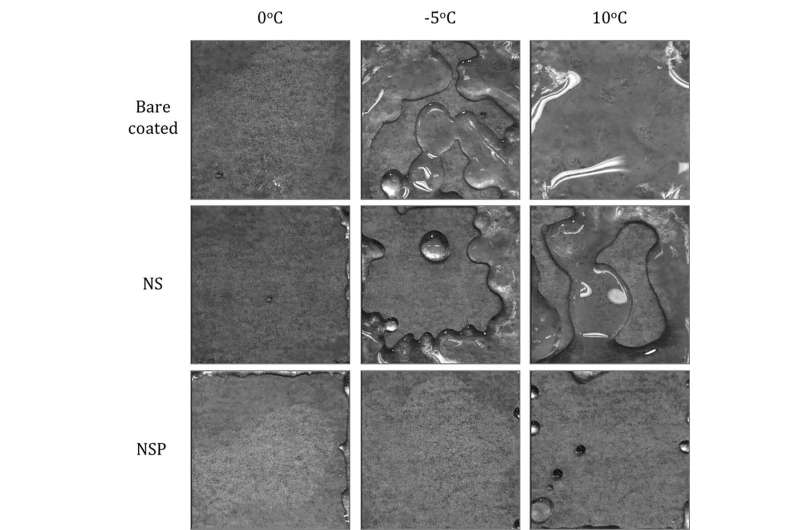Nanostructures modeled on moth eyes effective for anti-icing

Researchers have been working for decades on improving the anti-icing performance of functional surfaces. Ice accumulation on aircraft wings, for instance, can reduce lifting force, block moving parts and cause disastrous problems.
Research in the journal AIP Advances investigates a unique nanostructure, modeled on moth eyes, that has anti-icing properties. Moth eyes are of interest because they have a distinct ice-phobic and transparent surface.
The researchers fabricated the moth eye nanostructure on a quartz substrate that was covered with a paraffin layer to isolate it from a cold and humid environment. Paraffin wax was chosen as a coating material due to its low thermal conductivity, easy coating and original water repellency.
"We evaluated the anti-icing properties of this unique nanostructure covered with paraffin in terms of adhesion strength, freezing time and mimicking rain sustainability," said Nguyen Ba Duc, one of the authors.
Ice accumulation on energy transmission systems, vehicles and ships in a harsh environment often leads to massive destruction and contributes to serious accidents.
The researchers found the moth eyes nanostructure surface coated in paraffin exhibited greatly improved anti-icing performance, indicating the advantage of combining original water repellency and a unique heat-delaying structure. The paraffin interfered in the icing process in both water droplet and freezing rain experiments.
The number of air blocks trapped inside the nanostructure also contributed to delaying heat transfer, leading to an increase in freezing time of the attached water droplets.
"We also determined this unique nanostructure sample is suitable for optical applications, such as eyeglasses, as it has high transparency and anti-reflective properties," said Ba Duc.
The high transparency and anti-reflective effects were due to the nanostructure being modeled on moth eyes, which have these transparent and anti-reflective properties.
More information: "Investigate structure for transparent anti-icing surfaces," AIP Advances (2020). aip.scitation.org/doi/10.1063/5.0019119
Journal information: AIP Advances
Provided by American Institute of Physics




















